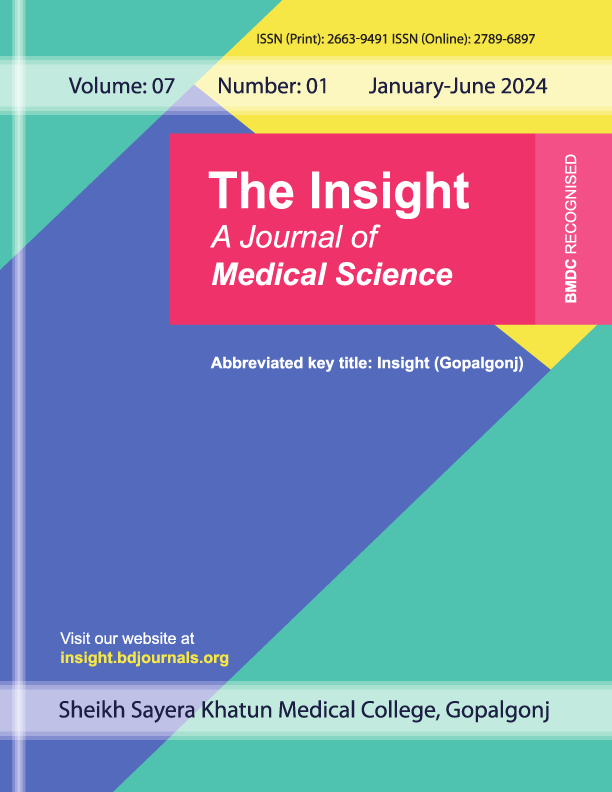Concordance of Organisms Between Blood and Tracheal Aspirate Cultures in Persistent Pneumonia Cases
Published 15-11-2024
Keywords
- Persistent Pneumonia,
- Causative organism,
- Blood C/S,
- Tracheal Aspirate
Copyright (c) 2024 The Insight

This work is licensed under a Creative Commons Attribution 4.0 International License.
How to Cite
Abstract
Introduction: This study assessed the concordance between microorganisms isolated from blood and tracheal aspirate cultures in children with persistent pneumonia, emphasizing the need for targeted antibiotic treatment to improve outcomes. Methods & Materials: This cross-sectional observational study was conducted at PICU (Paediatric Intensive Care Unit) of Bangladesh Shishu (Children) Hospital & Institute, Dhaka from November 2019 to October 2020. Children aged 2 months to 5 years admitted with persistent pneumonia were considered as the study population. Data was analyzed using computer software SPSS (Statistical Package for Social Sciences) version 23. Results: The study included 49 pediatric patients with a median age of 8 months, predominantly male (75.5%), residing mainly in urban areas (53.1%). All patients exhibited fever, cough, and respiratory distress, with additional symptoms such as vomiting (14.3%) and convulsions (10.2%). Blood cultures revealed a high rate of negativity (81.6%) and Klebsiella pneumoniae was the most common pathogen detected (8.2%). In contrast, tracheal aspirate cultures showed a 50% positivity rate, identifying Acinetobacter (22.7%) and Pseudomonas (18.1%) as prevalent organisms. Similarly, posterior pharyngeal swabs indicated a 46.6% positivity rate, with Pseudomonas (20%) and Klebsiella pneumoniae (13.3%) being notable isolates. Conclusion: The findings conclude that while blood cultures may yield low positivity rates, tracheal aspirate cultures provide a more comprehensive insight into the respiratory pathogens involved, especially in cases of localized infections. Recognizing the differences in pathogen detection among various sample types is crucial for guiding targeted antimicrobial therapy and improving clinical outcomes in pediatric persistent pneumonia cases.



